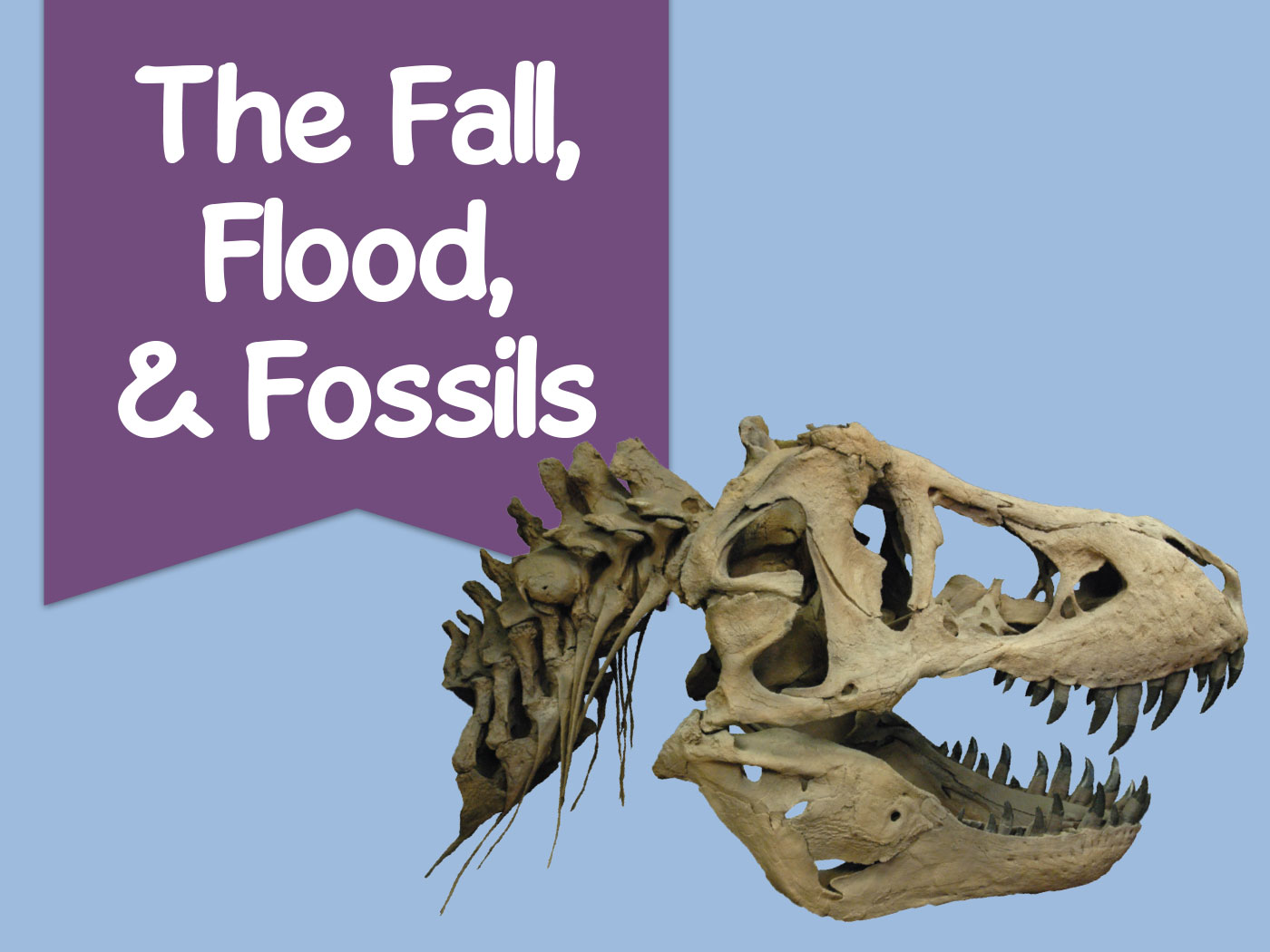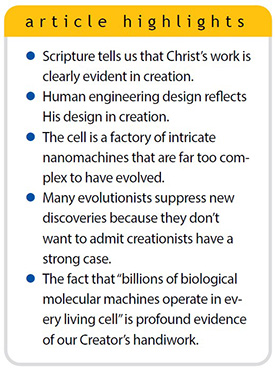
A few years ago, I did a deep study of Romans 1:18-25 from the Greek. This passage is fundamental to the ministry of creation science, and in honor of Mr. Wise and Dr. Haik, I pulled every resource and studied each word in detail. Here’s my expanded translation of verses 18 to 20, with 21 to follow.
18 God’s wrath is revealed—undirected by earthly means—and is against [mankind’s] lack of respect of God’s position and irreverent disregard of Him, as well as the sinful behavior of mankind, who suppress the truth—an evil act in itself.
19 Because some things about God are certainly knowable [to them], since they are plainly recognizable by the appearance [of things all around them]; for God has made it undeniably evident to them.
20 For unseen things of God are knowable from His agency causing the totality of the natural realm, we call nature, to exist. In contemplating His workmanship of things, mankind, in fact, clearly sees so as to make deductions [about God’s unseen attributes], namely, His unending inherent abilities and divine nature.1
Is the Lord Jesus’ workmanship as plainly recognizable and undeniable as this passage says? Absolutely. The more we discover how the engineered workmanship in living creatures corresponds to the engineered workmanship of man-made things, the more we see Christ’s power, genius, and wisdom. When someone credits nature for creating itself and fails to credit God as Creator, as millions do, they show a lack of respect for and an irreverent disregard of Him.
The Undeniable Engineering of Molecular Machines
The mind-blowing complexity of living things plainly reveals God’s agency as the maker of the biological realm. But we mustn’t stop at complexity alone. As researchers carefully study creatures part by part, they find components performing functions that correspond precisely to human-engineered components doing similar things. A prior Acts & Facts article compiled a long list of these remarkably analogous components.2
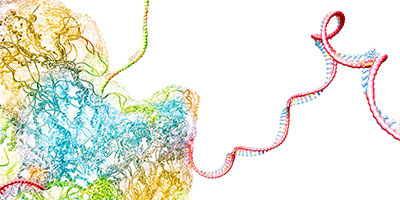
The fact that biological functions can be explained by engineering principles is important to how God reveals Himself generally to all of humanity, as Romans 1 says He does. Why? Well, general revelation wouldn’t work if organisms’ processes were alien to human design experience or human research couldn’t decipher their operation.
In that case, one person could claim organisms were designed, but another could be equally convinced that they evolved their complexity via Darwinism’s random-mutations and struggle-to-survive scenario. Or maybe it was magic, or space aliens, or something else. If biological functions were an enigma to us, then there’d be no way to determine whose claim is correct—which means that there’d be no general revelation about God.
Fortunately, God did not leave humanity clueless or needing an additional “key” to unlock biological secrets. God is free to design biological systems that operate through principles that totally contrast those of man-made designs—but He didn’t. Research confirms He did just the opposite. Thus, a Christian can claim that creatures were undeniably engineered. How? By pointing to features of living things that 1) correlate to undeniably human-engineered things and 2) function by known engineering principles.
The correspondence of numerous features at the cellular level is plainly evident even to evolutionary biologists. The journal Cell will be publishing a special issue titled “Molecular Machines in Cells: Natural, Semi-artificial, and Bioinspired Designs.”3 Dr. Vladimir Didenko of the Baylor College of Medicine, the guest editor, affirmed the tight correspondence between creatures and human engineering in his call for papers: “This rapidly developing and broad field includes the naturally occurring biological machines and the multitude of their fully artificial and semi-artificial analogs.”3 How might molecular machines compare to human-engineered devices? Didenko adds:
Billions of biological molecular machines operate in every living cell. These macromolecular complexes perform critical tasks, such as protein folding, DNA replication, transcription, and transportation of various cargos….The best studied examples of natural biological machines include ribosomes, plasma membrane pumps, mitotic spindles, and motor proteins: myosin, kinesin, and dynein….This Special Issue is dedicated to natural molecular machines and their artificial and hybrid analogs which employ mechanisms borrowed from nature.3
In a 1998 Cell article, Bruce Alberts, the former president of the U.S. National Academy of Sciences, gave this telling description:
The entire cell can be viewed as a factory that contains an elaborate network of interlocking assembly lines, each of which is composed of a set of large protein machines….Why do we call the large protein assemblies that underlie cell function protein machines? Precisely because, like machines invented by humans to deal efficiently with the macroscopic world, these protein assemblies contain highly coordinated moving parts.4
Fast-forward 21 years to researchers who send the same message.
To a large extent, the living cell is a population of interacting molecular machines. These protein machines [act] as motors and pumps or [perform] operations with other biomolecules.5
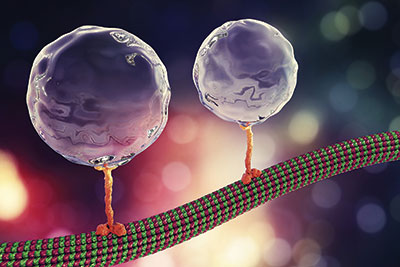
Though the microscopic machines found in creatures share similar designs and underlying engineering principles with human-engineered machines, they’re astonishingly complex, as these researchers attest.
While belonging to the nanoscale, protein machines are so complex that tracing even a small fraction of their cycle requires weeks of calculations on supercomputers.5
Human-engineered machines are increasingly directed by computers via machine-specific languages. A Canadian university recently reported:
Living organisms are made up of billions of nanomachines and nanostructures that communicate to create higher-order entities able to do many essential things, such as moving, thinking, surviving and reproducing.6
The principal investigator added:
The key to life’s emergence relies on the development of molecular languages—also called signalling mechanisms—which ensure that all molecules in living organisms are working together to achieve specific tasks.6
The biological languages they uncovered operate by the same principles as human-engineered control languages and can be reverse-engineered. These researchers discovered that “mathematical equations could well describe both languages” and could be used by humans “to design and engineer a programmable antibody sensor that allows the detection of antibodies over different ranges of concentration.”6
Indeed, the workmanship of creatures is astounding. It’s plainly recognizable in their features’ functionality and complex engineering. The truth of Romans 1:18-20 is overwhelmingly confirmed by scientific discoveries. People living today are increasingly “without excuse” (1:20) when they deny their Creator.
Willful Truth Suppression by All Means Necessary
Romans 1:21 details the first avenue of how humans suppress truth.
21 Because having gained this insight through experience, they actively did not credit the Creator God as Creator or give thanks.
This verse describes a deliberate behavior. For decades, evolutionists suppressed creatures’ obvious workmanship by developing a theory that was intrinsically anti-design. Their first tenet holds that genetic variation isn’t purposeful but totally random. Second, they personify nature to “select” from this randomness in a clumsy way. Nobel Prize winner Francois Jacob summed up these anti-design characteristics of evolutionary theory perfectly.
However, if one wanted to play with a comparison, one would have to say that natural selection does not work as an engineer works. It works like a tinkerer—a tinkerer who does not know exactly what he is going to produce.7
When this absurd story is taught as the truth, evolutionists know that many people won’t believe that a perfect God would create nature like a mindless clod. Thus, anti-design explanations are inherently anti-theistic.
However, an avalanche of discoveries—such as incredible molecular machines and directed genetic changes that lead to purposeful adaptations8—is showing that Francois Jacob’s account is as ludicrous as it’s always sounded. These current findings are notably contrary to evolutionary theory. Thus, evolutionists are bitterly divided, and their theory is in crisis.
Still, the general public is kept in the dark. Why? Evolutionists suppress truth for one overriding reason—to avoid aiding creationists or Intelligent Design (ID) advocates. Here’s a small sample from their literature regarding why they self-censor their acid disunity.
Too often, vital discussions descend into acrimony, with accusations of muddle or misrepresentation. Perhaps haunted by the spectre of intelligent design, evolutionary biologists wish to show a united front to those hostile to science.9
Indeed, I have chastised more than once some of my more, shall we say, enthusiastic, colleagues…[when criticizing evolutionary theory] for unwittingly creating a backlash among “conservatives”….It is definitely the case that evolutionary biologists are worried by the specter of ID.10
[Regarding why current evolutionary theory is tolerated] the dominant political concern was a fear of attack from fundamentalists….In the past couple of decades, everyone has become keenly aware of this, regardless of their satisfaction or otherwise with the modern synthesis. “You always feel like you’re trying to cover your rear,” says [Alan] Love. “If you criticize, it’s like handing ammunition to these folks.” So don’t criticize in a grandstanding way, says [Jerry] Coyne, [which only]…plays into creationists’ hands.11
The dispute grows intense over the words evolutionists are allowed to use for describing molecular “machines.” Some evolutionists want to say “machine” when they see something that has the characteristics of a machine. Other evolutionists are aghast and want to change the definition of machine or, better yet, ban the word altogether. Why? Because in all of human experience, machines are only engineered by intelligent agents, which raises the “specter” of Intelligent Design.
A pair of evolutionists favoring the ban on “machine” explain:
The use of such machine metaphors to describe aspects of molecular structure and function are commonplace in the scientific literature….Machine metaphors have also been heavily used by proponents of Intelligent Design (ID) in their arguments against evolutionary theory.12
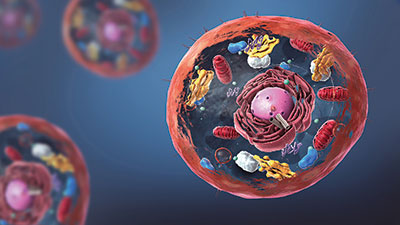
In textbooks, science educators have presented the comparison of living organisms and man-made machines not just as a superficial analogy, but carrying it out to a considerable level of detail…. Creationists and their modern heirs of the Intelligent Design movement have been eager to exploit mechanical metaphors for their own purposes….For ID proponents, of course, these are not metaphors at all, but literal descriptions of the living world, arching back to Newton’s conception of the Universe as a clock-like device made by the Creator. The very fact that scientists rely on mechanical analogies to make sense of living systems, while disclaiming any literal interpretation, strengthens creationists in their misconception that scientists are “blinded” by a naturalistic prejudice.13
The pulpit pounding reaches a near-frenzied level that’s proportional to the extent of self-delusion here.
At the same time, however, we have to realize that viewing complex macromolecular assemblies as ‘machines’ is entirely inappropriate….Rather, we are convinced that they are the products of aeons of evolutionary processes. Francois Jacob made this clear almost 30 years ago: nature is not an engineer; she is a tinkerer. Molecular machines, although it often may seem so, are not made with a blueprint at hand….The apparent similarities of creations by engineers and tinkerers raise a fundamental scientific challenge: understanding the laws of nature that unite evolved and designed systems. Or in other words: understanding the work of a tinkerer not only by using equipment designed by engineers…but also by searching for the blueprint. ‘Nothing in biology makes sense except in the light of evolution’: we know that Dobzhansky (1973) must be right. But our mind, despite being a product of tinkering, itself strangely wants us to think like engineers.14
My Greek teachers Mr. Wise and Dr. Haik likely never read evolutionary scientific literature, but their beloved Greek text in Romans 1 portrays these evolutionists perfectly. And like the apostle Paul, these men would have added, “Professing themselves to be wise, they became fools” (Romans 1:22).
In reality, molecular machines are the undeniable revelation of Christ’s power, genius, and wisdom.
References
- For the full translation of Romans 1:18-25, see Guliuzza, R. J. 2017. Engineering Principles Point to God’s Workmanship. Acts & Facts. 46 (6): 16-19.
- Guliuzza, R. J. 2010. Life’s Indispensable Microscopic Machines. Acts & Facts. 39 (8): 10-11.
- Special Issue “Molecular Machines in Cells: Natural, Semiartificial, and Bioinspired Designs.” Cell. Posted on mdpi.com.
- Alberts, B. 1998. The Cell as a Collection of Protein Machines: Preparing the Next Generation of Molecular Biologists. Cell. 92 (3): 291-294. Emphasis in original.
- Flechsig, H. and A. S. Mikhailov. 2019. Simple mechanics of protein machines. Journal of the Royal Society Interface. 16 (155): 20190244.
- Decoding how molecules “talk” to each other to develop new nanotechnologies. Université de Montreál news release. Posted on nouvelles.umontreal.ca August 15, 2023, accessed August 16, 2023.
- Francois J. 1977. Evolution and Tinkering. Science. 196 (4295): 1161-1166.
- Guliuzza, R. J. 2023. Dethroning the Dogma “Mutations Occur at Random.” Acts & Facts. 52 (4): 4-6.
- Laland, K. et al. 2014. Does evolutionary theory need a rethink? Nature. 514: 161-164.
- Pigliucci, M. The (ongoing) evolution of evolutionary theory. Scientia Salon. Posted on scientiasalon.wordpress.com November 10, 2014, accessed June 2, 2017.
- Whitfield, J. 2008. Biological theory: Postmodern evolution? Nature. 455: 281-284.
- Höst, G. and G. Bohlin. 2015. Engines of creationism? Intelligent design, machine metaphors and visual rhetoric. Journal of the International Society for the Arts, Sciences and Technology. 48 (1): 80-81.
- Pigliucci, M. and M. Boudry. 2011. Why Machine-Information Metaphors are Bad for Science and Science Education. Science & Education. 20 (5-6): 453-471. Emphasis added.
- Neupert, W. 2005. Highlight: Molecular Machines. Biological Chemistry. 386: 711, quoting Dobzhansky, T. 1973. Nothing in biology makes sense except in the light of evolution. The American Biology Teacher. 35 (3): 125-129.
* Dr. Guliuzza is President of the Institute for Creation Research. He earned his Doctor of Medicine from the University of Minnesota, his Master of Public Health from Harvard University, and served in the U.S. Air Force as 28th Bomb Wing Flight Surgeon and Chief of Aerospace Medicine. Dr. Guliuzza is also a registered Professional Engineer and holds a B.A. in theology from Moody Bible Institute.






